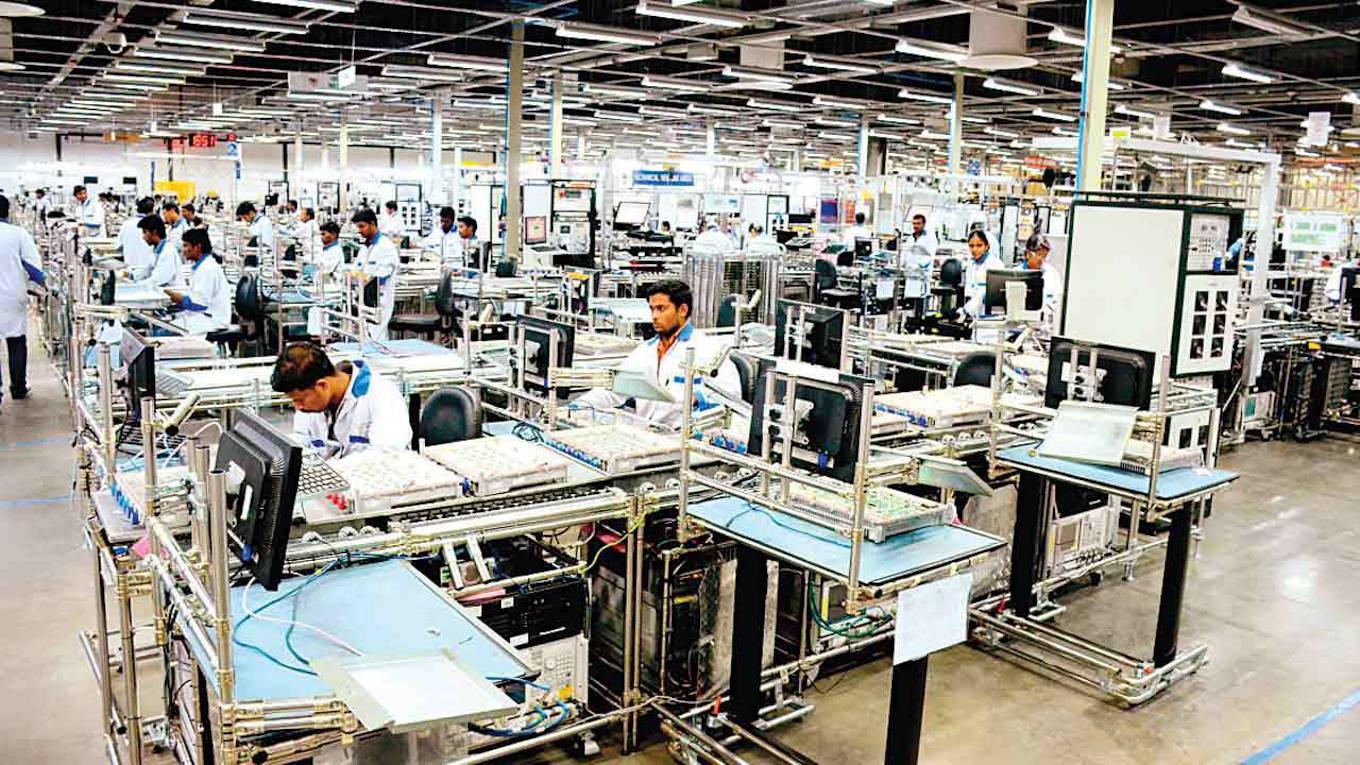-
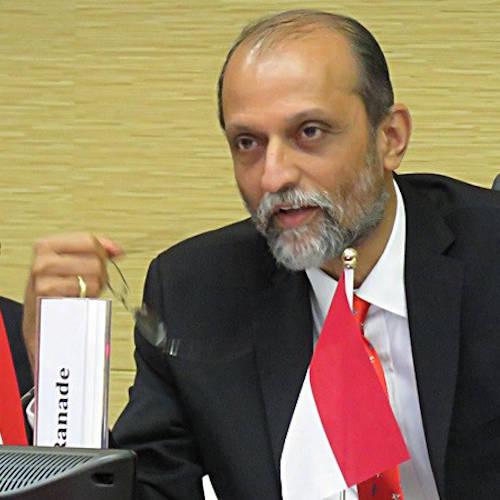
Ranade: old school economics
But, as top officials told Business India, the past schemes allowed companies to take the incentives without making commitments. But the PLI is different in the sense that it is linked to outcomes. Incentives will be disbursed only after production has taken place in the country. The scheme is thus purely result-oriented. Then, the calculation of incentives will be based on incremental production to be achieved at a high rate of growth.
To achieve this incremental production, beneficiaries will be required to make additional investment in establishing green-field facilities or carrying out expansion of existing facilities. Also, the scheme focuses on size and scale by selecting those players who can deliver on volumes. Lastly, specific amounts have been earmarked for different sectors. So the money is not going into a big, dark hole.
Hastened by pandemic
Last year, in November, when the economy was still struggling to get the better of the corona virus pandemic and the manufacturing sector was down in the dumps, the Modi government gave a leg up to the PLI scheme for 10 key sectors for enhancing India's manufacturing capabilities and boosting exports under its Atmanirbhar Bharat plank. An allocation of Rs1.45 lakh crore for the next five years was committed for this scheme, with the largest share going to automobiles and auto components followed by advanced chemistry cell (ACC) battery, pharmaceuticals and drugs. Then came telecom and networking products, textile products, food products. White goods, specialty steel, and high-efficiency solar PV modules, completed the list.
Before that, the government had announced a PLI scheme for electronics manufacturing in March 2020. Justifying the need for PLI when it was first unveiled in March last year, the government displayed a rare moment of candour. It admitted that the domestic electronics hardware manufacturing sector suffers disability of 8.5-11 per cent, on account of lack of adequate infrastructure, domestic supply chain and logistics; high cost of finance; inadequate availability of quality power; limited design capabilities and focus on R&D by the industry; and inadequacies in skill development. The scheme offered a production-linked incentive to boost domestic manufacturing and attract large investments in mobile phone manufacturing and specified electronic components, including ‘assembly, testing, marking & packaging’ (ATMP) units.
The idea behind the PLI, with an incentive outlay of Rs45,000 crore, was to bring electronics manufacturing closer to vision of National Policy on Electronics 2019 (NPE 2019) to position India as a global hub for electronics system design & manufacturing (ESDM), by encouraging and driving capabilities in the country for developing core components and creating an enabling environment for the industry to compete globally. Later, in August 2020, the PLI scheme was extended to the pharmaceutical sector to promote domestic manufacturing of identified critical key starting materials (KSMs), drug intermediates (DIs) and active pharmaceutical ingredients (APIs) in India.
Perhaps, the PLI scheme would have remained a slogan had not corona virus struck and forced the Modi government to rethink its rescue strategy for the economy and expand the scheme. While presenting the Union budget on 1 February, Finance Minister Nirmala Sitharaman upped the outlay to Rs1.97 lakh crore on various PLI schemes, covering 13 sectors, over the next five years, starting from this fiscal. That’s a lot of money. But will money alone deliver?
-
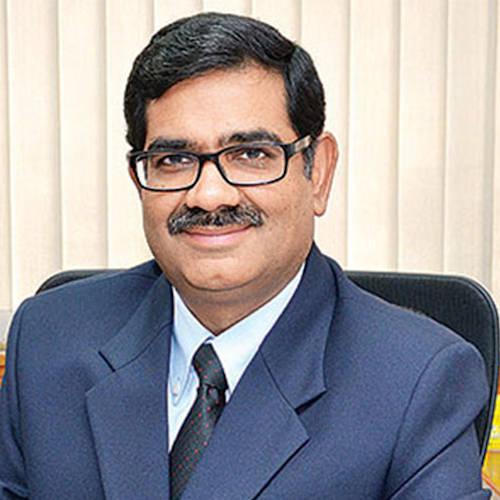
Kathuria: compliant with WTO commitments
Overcoming WTO hurdle
In the recent past, most of the ideas to boost manufacturing got challenged at the World Trade Orgnization (WTO), forcing India to unwind them later. The WTO agreement prevents member nations from linking subsidies to mandatory exports and local content. It was said that these ideas/schemes violated international trade agreements between member-countries.
So, the PLI looks to replace a clutch of ideas like the Merchandise Exports from Indian Scheme (MEIS), EPCG (Export Promotion of Capital Goods) and Special Economic Zones (SEZs), which have fallen foul of the WTO. MEIS was implemented by the Modi government from 2015 to 2000 without any spectacular success. It ran into challenge from the US and other countries at the WTO. These countries argued that the scheme provided direct export subsidisation and the WTO ruled in their favour. So, MEIS had to go and was replaced with a more nuanced Remission of Duties or Taxes on Export Products (RoDTEP) scheme.
EPCG, which was devised to facilitate the import of capital for manufacturing quality goods and to augment the competitiveness of Indian exports, is facing the heat. With the WTO prescribing withdrawal of prohibited subsidies given to the SEZs, the government is fast-tracking work on reforming provisions for the zones to make them compatible with the multilateral norms.
Indeed, subsidies granted by the government have been a matter of international disputes. Senior officials, while acknowledging the pressures India has been under on the above schemes, say the present scheme is investment and production linked and may not fall foul of international trade agreements. Under the present PLI scheme, for a company to qualify for ‘notified subsidy’, it doesn’t have to qualify for exports or local value added targets.
“The objective is really to make India more compliant with our WTO commitments,” says Rajat Kathuria, director & chief executive, Indian Council for Research on International Economic Relations (ICRIER), a policy think-tank. “It is expected to also make it non-discriminatory and neutral with respect to domestic sales and exports.”
Tied to protectionism
The worrying part is that the PLI scheme seems to be supported by protection via import tariffs. In 2018, then Finance Minister Arun Jaitley reversed India’s two-and-a-half-decade old progress in tariff reduction in 2018. Since then India’s average import tariff on industrial products has gone up from 13 per cent to 18 per cent and has been applied to nearly one-third to one-half of all 10,000 odd product lines.
As economist Ajit Ranade points out, “This is an old school economics textbook approach to attract investment in the country – you raise tariff walls and, hence, a foreign player can access India’s vast consumer market only by jumping across that wall, that is, being forced to invest in India.”
“If we promote domestic production by raising import tariffs, it increases costs for the domestic buyer significantly,” Ranade adds. “It also acts like an export tax, for entrepreneurs who are using imported components to re-export their products.”
-
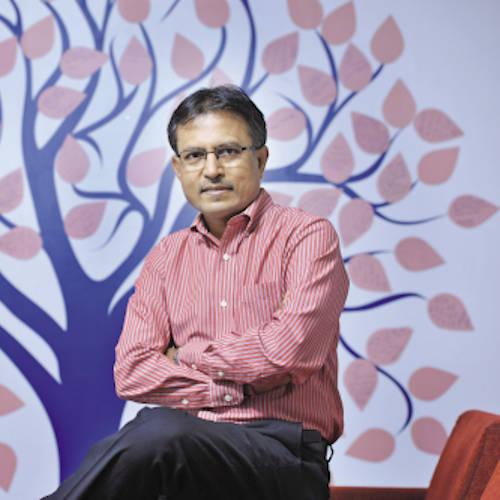
Shah: well-structured scheme
Much of the action for implementation of various projects under PLI will have to involve state governments, so that the scheme is taken fuller advantage of in the states. State-level reforms may be needed to create better infrastructure and logistics, and to provide cheaper power. Importantly, states may have to act effectively to curb rent-seeking by officials and local leaders that leads to a vitiated business environment for investors. Addressing the sixth meeting of the Governing Council of NITI Aayog, Modi touched upon this aspect of PLI by urging the states to take full advantage of this scheme and attract maximum global investments. However, it will take more than mere words to get the states on board.
It is now obvious that the announcement of the PLI scheme was made after seeing the insipid results under the Make in India initiative. Even Atmanirbhar Bharat was called by some as a re-packaged version of the Make in India movement, using new taglines such as 'vocal for local'. The government came to the conclusion that, instead of a sweeping slogan, it was necessary to have a focussed sector-specific strategy to promote manufacturing.
A comprehensive approach was required for every sector through guidelines for operationalisation of the scheme, along with the entwined development of the corresponding ecosystem. It was decided that the guidelines will be issued by respective individual sector ministries and the proposal for each sector will be approved by the cabinet after appraisal by the expenditure finance committee.
But whether it will significantly enhance the contribution of the manufacturing sector towards the GDP, and more importantly job creation in the immediate future to absorb the excess labour from rural areas, remains to be seen. With successive governments doing little to increase farm incomes and address the indebtedness of farmers, a key factor responsible for the current rash of protests against the farm reforms, the farm unrest will continue to fester. Currently, the burden of absorbing rural labour has fallen on the services sector. But the 32 per cent of the total number of jobs being created by this sector is just not enough. Moreover, it is not commensurate with the 54 per cent contribution to the GDP that services make.
How it will work
Here’s how the government hopes the PLI scheme will work. Under the PLI scheme for large-scale electronics manufacturing, eligible players will receive incentives of 4-6 per cent of production value for five years, after they achieve their investment and production value target for each year. The move is likely to attract global players in the manufacturing sector and make India globally competitive by attracting investment. The scheme also aims to encourage local companies to set up or expand existing manufacturing units in the country.
On 24 February 2020, the government approved a Rs12,195 crore PLI plan to boost local manufacturing and exports of IT products, such as laptops, tablets, personal computers and servers. It provides manufacturers cash-backs of 1-4 per cent of additional sales of locally made goods over four years, with 2019-20 as the base year. "The focus of the scheme is to get global champions to India and to make national champions out of local manufacturers," Telecom & IT Minister Ravi Shankar Prasad said, adding that the plan could create roughly 180,000 jobs. The PLI plan is also likely to help US tech giant Apple Inc assemble some of its iPad tablets in India.
-
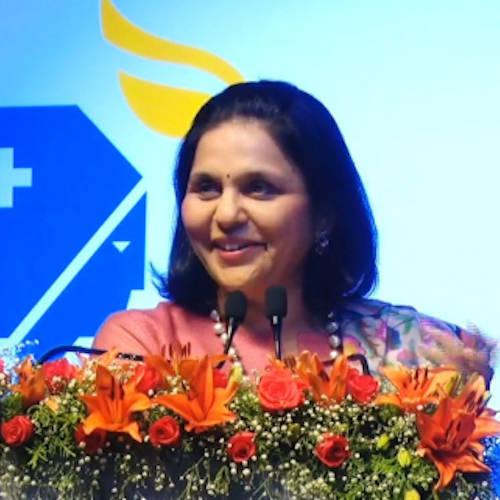
Reddy: it will boost employment generation
The government is setting store by the success of its policy push in wooing Apple. For instance, Apple suppliers Foxconn is expanding in India, Pegatron is setting up base and Wistron is restarting operations, after angry workers went on a rampage at its local plant here. The three Taiwan companies have committed to invest roughly $900 million to make iPhones in India.
Of course, it helps that India's huge market had already turned the country into the world's second-biggest mobile maker after China. The Modi government is hoping that the PLI scheme will hopefully help India overtake China. But the fact remains that India doesn't yet have the scale or the supply chain for making IT products and competes with duty-free imports of tech products.
The new scheme provides for an incentive of 4-6 per cent on incremental sales (as compared to the base year: 2019-20) of mobile phones and specified electronic components (such as semi-conductors, diodes, printed circuit boards, etc) made in India, to eligible companies, for a period of five years in the following three categories: (a) mobile phones manufactured and sold by domestic companies; (b) mobile phones manufactured and sold by other companies (invoice value of Rs15,000 and above); and (c) specified electronic components.
The scheme is available to all companies registered in India, which meet the threshold requirement of a specified incremental investment (between Rs100 crore and Rs1,000 crore) in the next four years as well as incremental sales of manufactured goods. However, it is notable that a maximum of five domestic and five global mobile manufacturing companies and 10 electronic component manufacturers will be selected from the applications received by the government.
In case more applications are received, then companies having the highest consolidated global manufacturing revenues will be considered. Accordingly, the scheme is designed to select only the few top companies as the government has limited funds to disburse.
Heavyweight backers
The scheme has its share of heavyweight backers. Nilesh Shah, group president & MD, Kotak Mahindra AMC, lauds the scheme for being well structured, learning from the textile upgradation fund. (Under this fund, investors got money for setting up a plant which some gold-plated, siphoned off the money and create NPA.) “There is no incentive for setting up a plant, but if your plant starts producing, then there’s an incentive,” Shah points out. “While other countries have far better infrastructure, maybe even better ease of doing business, none of them have a large market like India.”
"The sectors covered under the PLI scheme are strategic, technology-intensive and also important from the perspective of employment generation in the country. Indian economy offers huge opportunity for these sectors, not just from the domestic market perspective but also to make India an export hub for these products...," says Sangita Reddy, joint MD, Apollo Hospitals.
Credit Suisse, in its report, titled India market strategy: PLI schemes – a new pro-growth template for India’s industrial policy, predicts that this programme will add 1.7 per cent to the GDP by 2026-27. The report outlines how bulk of additional $144- billion sales across these 13 sectors will be exported, thus also shrinking the trade deficit by $50 billion.
-
There is no incentive for setting up a plant, but if your plant starts producing, then there’s an incentive
Concerns as well
However, as with other significant economic decisions taken by the Modi government in the past, there are sharply polarised views on the PLI scheme as well. Brickwork Ratings has a harsh stance on the scheme, noting that it will make sectors dependent on subsidies. “The need of the hour is to improve the competitiveness of the economy, which requires exposing domestic players to international competition. An overvalued rupee and increased tariff protection cannot make the economy competitive,” its pre-budget expectations report said. “There is clearly a need to reverse protectionist trends and to modify the Atmanirbhar campaign to increase competitiveness, rather than erecting protectionist walls.”
Additionally, there has been criticism of the PLI scheme’s approach to pick only winners and champions. In some sectors this makes sense. For instance, India’s import dependence on China for advanced pharmaceutical intermediates (API) is 68 per cent and that needs to go down. It is also a strategic sector since it is in healthcare. But India’s status as a leading bulk drugs exporter to the West is also dependent on the import of APIs from China. So, while a PLI for APIs is good, it will take some time to wean away from China dependence.
Then there is the bureaucratic approach. One example of this overkill is that the bid document for the auto sector for those who wish to apply for PLIs is 187 pages long! Imagine the compliance cost. No wonder so far, not many big players have stepped in, either for auto or for pharma.
There are other concerns about how the scheme will pan out. The quantum of incentives is to be calculated by a simple formula – that is, net incremental sales x rate of incentive (4-6 per cent). This implies that the incentive is a factor of the incremental production rate, that is, greater the production, the higher the incentives. However, the fine print reveals that the incentives cannot be claimed beyond the financial outlay proposed by the government.
If the total quantum of incentives exceeds the annual financial outlay, the incentives will be disbursed to all companies on the basis of their net incremental sales. Therefore, an over-performing company may not reap the benefits under the scheme in absolute terms. On the flip-side, if one company under-performs but another company over-performs in terms of its net incremental sales, then any unappropriated incentive amount will be transferred proportionately to the over-performing companies.
The scheme also provides that an Empowered Committee (EC) will be constituted, which has the power to review and revise rate of incentives, ceilings, eligibility criteria, etc. Considering that companies investing under the scheme will expect that incentives are granted to them at the promised rates, any unfavourable change in the rates by the EC in future is likely to become a bone of contention with the government.
-

Dhar: across the board initiatives needed
Government’s calculations
So, what does the government hope to get out of PLI scheme? The government’s philosophy was spelt out in The Economic Survey that was tabled in the Parliament a day before the budget. In the survey, the government said that the scheme will make "Indian manufacturers globally competitive, attract investment in the areas of core competency and cutting-edge technology." The survey added that the scheme will also establish backward linkages with the MSME sector in the country, which, in turn, "will lead to more inclusive growth and create huge employment opportunities".
But, can India replicate the success of smartphone manufacturing with other electronics in a bid to cut imports? According to experts, the idea of PLI is important as the government cannot continue making investments in these capital intensive sectors as they need longer times for start giving the returns. Instead, what it can do is to invite global companies with adequate capital to set up capacities in India. But there is a limit to what the government can do.
“The kind of ramping up of manufacturing that we need requires across the board initiatives, but the government can’t spread itself too thin. Electronics and pharmaceuticals themselves are large sectors; so, at this point, if the government can focus on labour-intensive sectors like garments and leather, it would be really helpful,” feels Biswajit Dhar, trade expert & professor, Centre for Economic Studies & Planning, Jawaharlal Nehru University.
“Any PLI initiative is good and required for attracting investments in the country to make it globally competitive for boosting exports,” says Vivek Bhatia, MD & CEO, Thyssen Krupp Industries India, a part of the Thyssen group in India. However, if the government is really serious about getting foreign investments in new projects, it should also help prospective investors to get steel and power at globally competitive costs. Steel prices have gone through the roof and power prices are different in various states. “I believe that besides plug-and-play models, the government has to consider a few out of box initiatives to compete for investments which also have the option of choice of going to Vietnam, China or Indonesia.”
-
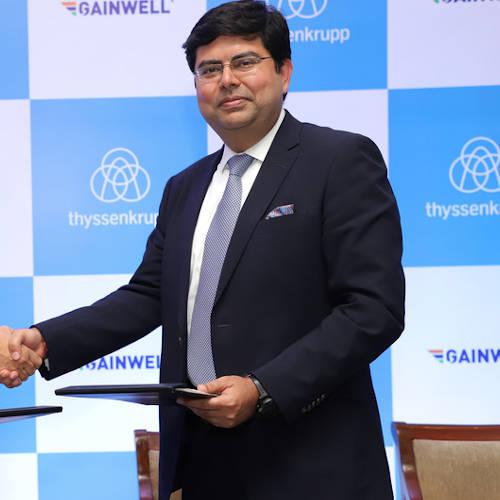
Rajeev Kher, former secretary, ministry of commerce, says that the rationale for production-linked incentives is based on the need to remove disadvantages that manufacturers in selected sectors face, when competing with players from nations considered leaders in those sectors. He recalls the phased manufacturing programme for the automobile sector that India had launched several decades ago.
There were no production incentives then. Tariff walls, regulatory protection and definitive action, despite challenges in the WTO, worked well. Global market access for domestic production was not even on the agenda and investments sought were entirely aimed at the domestic market. However, several factors have changed thereafter.
“We are far more integrated now with the global economy,” Kher points out. “We have also on boarded a few regional and global value chains. Major markets are better integrated now though we have remained reluctant in the process losing out on advantages of such integration offers”. Hopefully, that will work for India.
However, the government will have to be mindful of the fact that with too many conditions, any industrial policy will become incoherent and inconsistent. “The best approach is one which gives private and foreign investors stability, predictability and continuity in a broad policy stance. Leave out the micro-specifications if you want to succeed,” cautions Ranade. The Modi government is not used to entertaining advice. But will it listen to this one?
-
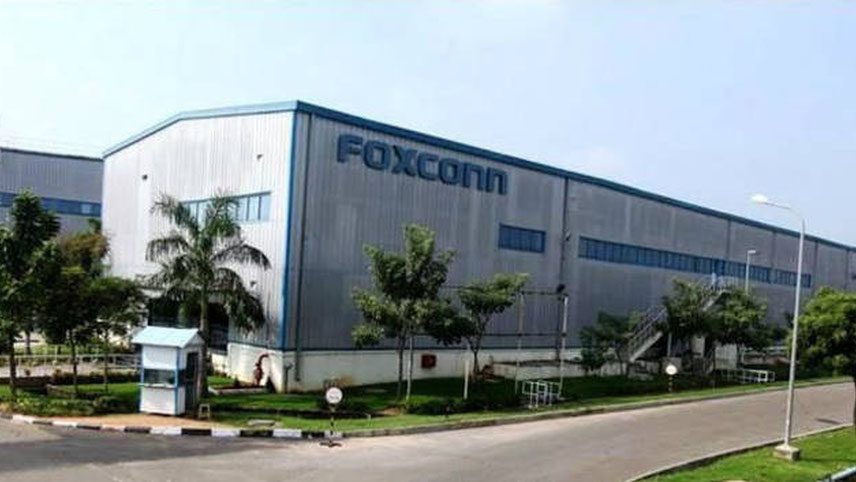
Policy push: Foxconn is expanding in India
The key sectors
The PLI scheme is applicable for 13 sectors, which include:
# Advance Chemistry Cell(ACC) battery
# Electronic/Technology Products
# Automobiles and auto components
# Pharmaceuticals drugs
# Telecom and Networking Products
# Textile Products: MMF segment and technical textiles
# Food Products
# High Efficiency Solar PV Modules
# White Goods (ACs & LED)
# Speciality Steel
# Mobile and certain electronic components
# Active Pharmaceutical Ingredients (API)
# Medical devices
